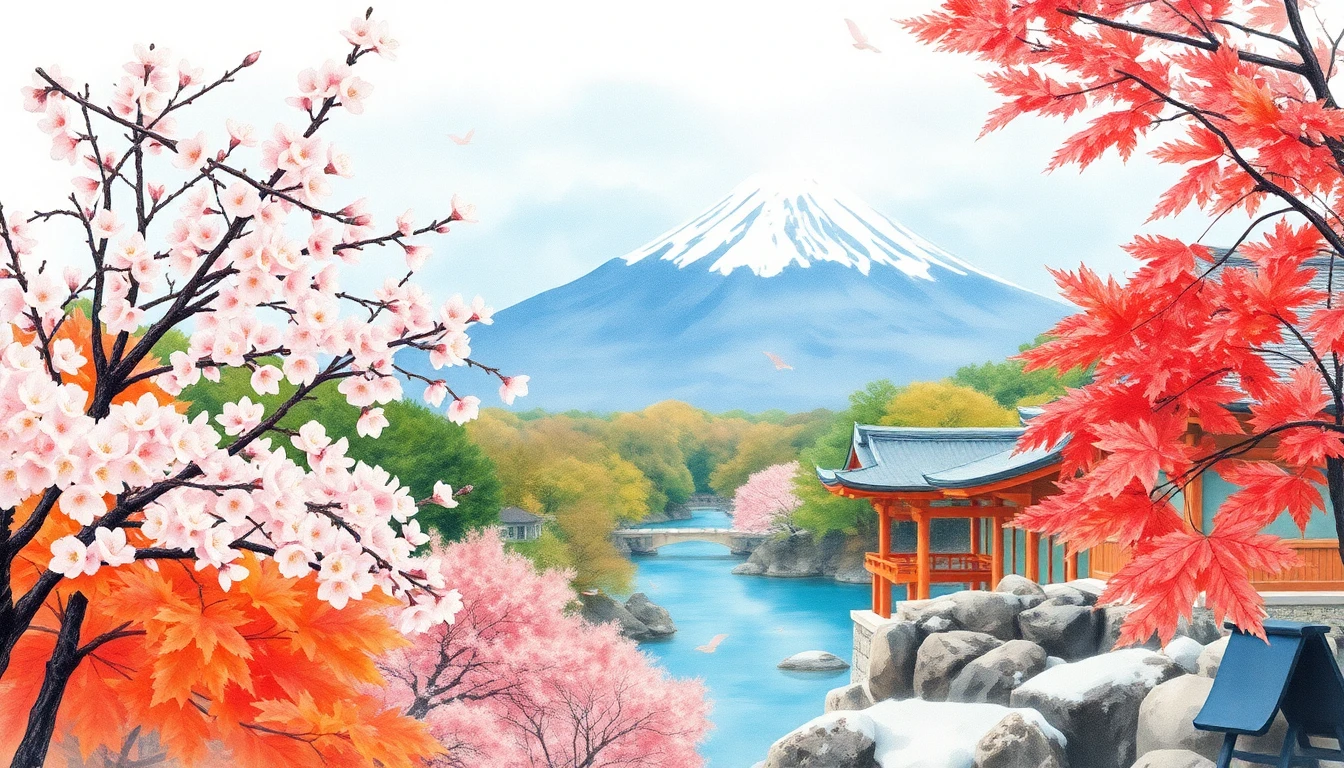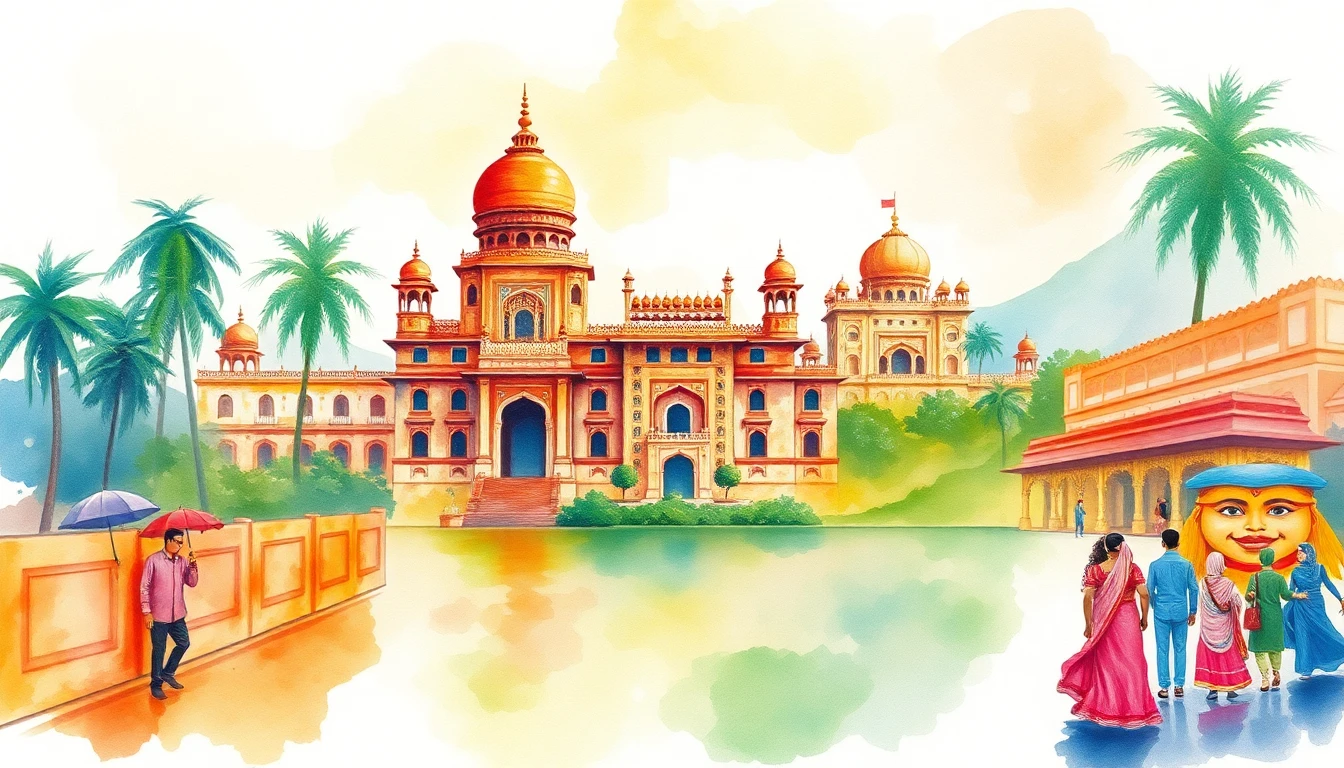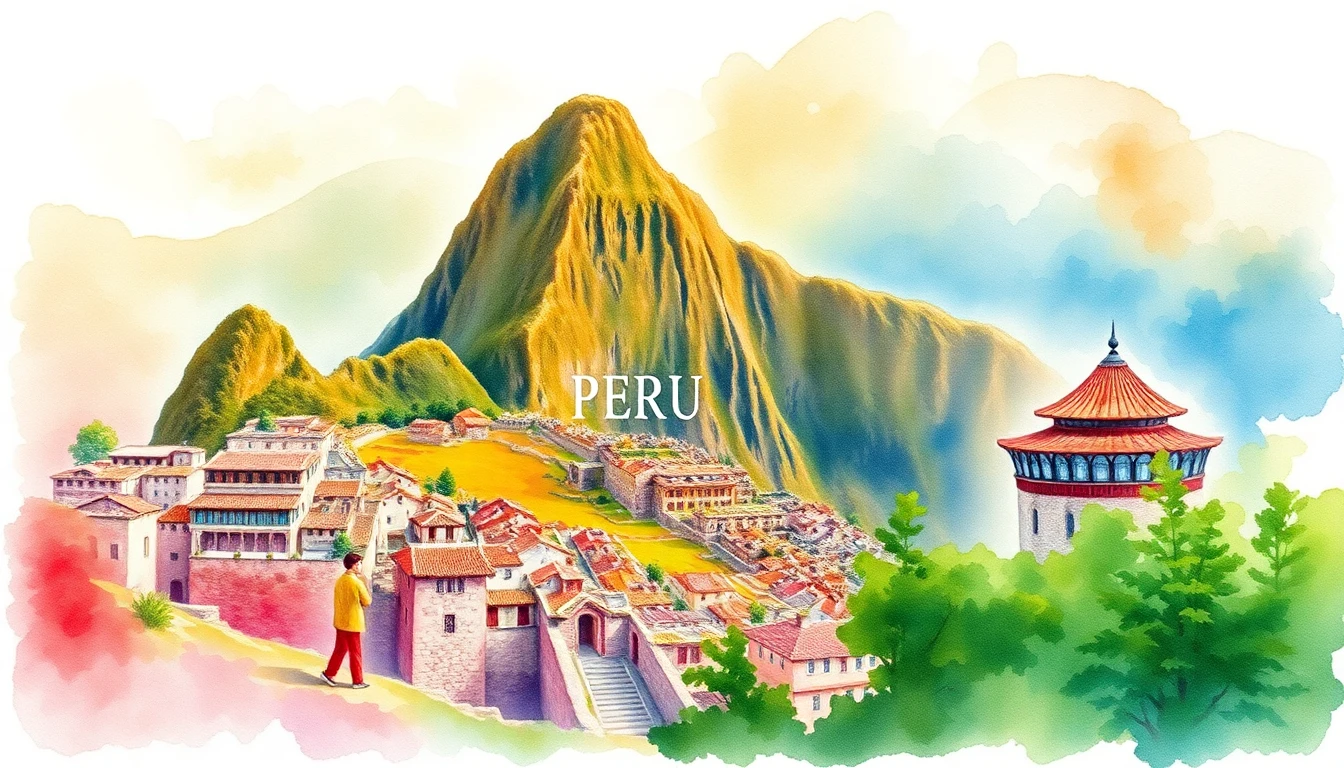Best Time to Visit Thailand 2025: Complete Climate & Season Guide
⚡ Quick Answer
The best time to visit Thailand is during the cool season (November-March) for pleasant weather, low humidity, and minimal rainfall. The hot season (April-May) brings extreme heat, while the monsoon season (June-October) offers lush landscapes but frequent rain showers.
Standing on a pristine beach in Koh Phi Phi, watching the sunset paint the limestone cliffs in shades of gold and orange – this is the Thailand that fills our dreams. But the reality of Thailand's climate can make or break your tropical paradise experience. Having traveled through Thailand's diverse regions during every season over the past eight years, I've learned that timing isn't just about weather – it's about experiencing this incredible country at its absolute best.
Thailand's climate follows three distinct seasons that shift dramatically across the country's varied geography. From the mountain mists of Chiang Mai to the coral reefs of the Andaman Sea, each region dances to its own climatic rhythm. Understanding these patterns transforms you from a sweaty, rain-soaked tourist into a savvy traveler who knows when to chase waterfalls, when to island-hop, and when to explore ancient temples in perfect comfort.
This guide draws from countless conversations with locals, years of tracking monsoon patterns, and the hard-won wisdom of both triumphant adventures and challenging experiences. Whether you're dreaming of floating lanterns in Chiang Mai, diving in crystal-clear waters, or navigating Bangkok's vibrant street food scene, understanding Thailand's seasonal soul will elevate your journey from good to absolutely unforgettable.
Understanding Thailand's Three Seasons
Thailand operates on a tropical monsoon climate that divides the year into three distinct seasons, each offering dramatically different experiences. Unlike temperate countries with four seasons, Thailand's climate follows the rhythm of monsoons, heat, and blessed relief – a pattern that has shaped Thai culture, festivals, and daily life for centuries.
The cool season transforms Thailand into a traveler's paradise. Temperatures drop to comfortable levels, humidity decreases, and rain becomes a rare sight. This is when Thailand shows off – festivals fill the calendar, outdoor markets buzz with energy, and even the Thai people seem more relaxed without the oppressive heat. The hot season tests your limits with temperatures that can exceed 40°C, but it's also when fruit reaches peak ripeness and prices drop significantly.
The monsoon season brings life back to Thailand's landscapes. Rice fields turn emerald green, waterfalls reach their most spectacular flows, and the air smells of petrichor – that distinctive scent of rain on hot earth. While challenging for some travelers, this season reveals Thailand's natural beauty at its most dramatic and offers authentic cultural experiences as tourist crowds thin dramatically.
Thailand by Season
Thailand's three seasons create entirely different travel experiences. From the perfect weather of the cool season to the dramatic beauty of the monsoons, here's your complete guide to Thailand's climate patterns.
❄️ Cool Season (Nov - Mar)
Peak Season • Perfect Weather • High Prices
🌡️ Weather
20-30°C (68-86°F) • Low humidity • Minimal rainfall (check TMD forecasts)
🏆 Highlights
- • Perfect beach and outdoor conditions
- • Festival season (Loy Krathong, New Year)
- • Excellent visibility for diving
- • Comfortable temple and city exploration
⚠️ Considerations
- • Highest accommodation prices
- • Crowded beaches and attractions
- • Advanced booking essential
🔥 Hot Season (Apr - May)
Extreme Heat • Songkran Festival • Lower Crowds
🌡️ Weather
30-40°C (86-104°F) • Very hot • Occasional storms
🏆 Highlights
- • Songkran water festival (April)
- • Peak fruit season
- • Lower accommodation prices
- • Great for air-conditioned activities
⚠️ Considerations
- • Extreme heat can be dangerous
- • Limited outdoor activities
- • Higher risk of heat exhaustion
🌧️ Monsoon Season (Jun - Oct)
Lush Landscapes • Frequent Rain • Best Prices
🌡️ Weather
25-32°C (77-90°F) • High humidity • Daily rainfall
🏆 Highlights
- • Lush, green landscapes everywhere
- • Spectacular waterfalls
- • Lowest accommodation prices
- • Authentic local experiences
⚠️ Considerations
- • Frequent rain disrupts plans
- • Some islands may be inaccessible
- • Flooding risk in some areas
Cool Season: Thailand's Golden Period
The cool season in Thailand is nothing short of magical. From November through March, the country transforms into the tropical paradise of everyone's dreams. Temperatures drop to comfortable levels, humidity plummets, and rain becomes so rare that many Thais joke about forgetting what it looks like. This is when Thailand puts on its best show, and frankly, when you'll understand why millions of people fall in love with the Land of Smiles.
I'll never forget my first cool season experience in Chiang Mai during November. The morning mist hung over the mountains like a soft blanket, the air was crisp enough to actually want a light jacket, and the city felt alive in a way that's impossible during the oppressive heat of other seasons. Street food vendors seemed more cheerful, temple visits became pleasant rather than endurance tests, and even Bangkok's notorious traffic felt bearable without the sweltering heat.
This is also festival season in Thailand. Loy Krathong in November sees thousands of candlelit floats drifting down rivers and lakes, creating one of Asia's most romantic spectacles. New Year brings its own celebrations, while Chinese New Year in early February fills the streets with dragon dances and firecrackers. The weather is so perfect that every outdoor festival, market, and gathering feels like a celebration of life itself.
For beach lovers, the cool season delivers paradise. The Andaman Sea calms to mirror-like perfection, revealing coral reefs in startling clarity. The Gulf of Thailand offers warm, gentle waters perfect for swimming and snorkeling. Islands like Koh Samui, Koh Phi Phi, and Koh Lanta showcase their best sides – pristine beaches, crystal-clear water, and that perfect tropical breeze that makes you never want to leave.
Hot Season: Embrace the Fire
Thailand's hot season is intense – there's no gentle way to describe it. From April through May, the country becomes a furnace that tests even the most heat-adapted travelers. Temperatures soar past 40°C (104°F), humidity makes the air feel thick enough to swim through, and the sun beats down with an intensity that can be genuinely dangerous. Yet this season has its own unique rewards for those brave enough to embrace it.
April brings Songkran, Thailand's water festival and traditional New Year celebration. For three days, the entire country engages in the world's largest water fight. Streets become rivers, strangers become friends through shared splashing, and the oppressive heat transforms into a reason for celebration. I've experienced Songkran in Bangkok, Chiang Mai, and small rural towns – each offers a different flavor of pure, joyous chaos that makes the heat not just bearable, but essential to the experience.
The hot season is also fruit season in Thailand. Mangoes reach peak ripeness and sweetness, durian lovers find the best specimens, and exotic fruits I'd never heard of appear in markets everywhere. The Thai phrase "raan yen" (evening coolness) takes on profound meaning as entire communities shift their schedules – markets open before dawn and after sunset, leaving midday for air-conditioned refuge or cooling swims.
Smart hot season travelers adapt their strategies completely. Early morning temple visits (starting at 6 AM) avoid both heat and crowds. Shopping malls become havens with their powerful air conditioning and food courts. Beach time shifts to shaded hammocks and frequent water breaks. The payoff includes dramatically lower prices, authentic local experiences as tourism drops, and a profound appreciation for Thailand's culture of adaptation and resilience. For official tourism information and travel requirements, visit the Tourism Authority of Thailand.
Monsoon Season: Thailand's Natural Renewal
Thailand's monsoon season reveals the country's wild, untamed soul. From June through October, daily afternoon thunderstorms transform the landscape from brown and dusty to emerald and lush. This is when Thailand breathes again after the scorching hot season, when farmers celebrate the return of life-giving rain, and when travelers willing to embrace uncertainty discover Thailand's most dramatic natural beauty.
Monsoon rains in Thailand are an experience unto themselves. Unlike the gentle drizzles of temperate climates, Thai monsoons arrive with theatrical drama – lightning illuminates the sky, thunder shakes buildings, and rain falls with tropical intensity that turns streets into temporary rivers. But here's the secret: most rain falls in spectacular afternoon bursts, leaving mornings and evenings surprisingly pleasant for exploration.
This season transforms Thailand's natural attractions. Waterfalls that trickle during dry months become thundering cascades. Rice paddies turn brilliant green, creating some of the country's most photogenic landscapes. National parks burst with life – flowers bloom, animals become more active, and jungle treks reveal Thailand's biodiversity at its peak. The air smells fresh and clean, washed by daily rains that clear away heat and dust.
For budget travelers, monsoon season offers incredible value. Hotel prices drop by 50% or more, restaurants offer special promotions, and tour operators discount activities. You'll have famous temples and attractions largely to yourself. Thai people are often more relaxed and friendly during this season, grateful for the cooler temperatures and the agricultural abundance that monsoons bring.
Month-by-Month Thailand Guide
November
ExcellentPerfect weather begins • 24-30°C (75-86°F)
November marks Thailand's transformation from oppressive heat to tropical perfection. The monsoons retreat, humidity drops dramatically, and temperatures settle into that perfect range where you never feel too hot or too cold. This is when experienced Thailand travelers book their trips, knowing they're about to experience the country at its absolute best.
Loy Krathong, Thailand's festival of lights, typically falls in November and showcases the country's romantic soul. Thousands of candlelit floats drift down rivers while couples make wishes for the future. The festival feels more magical in the perfect November weather – no sweat dripping onto your camera lens, no rain threatening outdoor celebrations.
November Highlights:
- • Loy Krathong festival (date varies by lunar calendar)
- • Perfect beach weather begins
- • Excellent diving visibility
- • Comfortable trekking conditions
- • Peak season begins - book accommodations early
December
Peak SeasonCool & dry paradise • 22-28°C (72-82°F)
December brings Thailand's coolest temperatures and driest conditions. This is peak season for good reason – every day feels like a gift of perfect tropical weather. Northern Thailand can actually feel chilly in the mornings, while southern beaches offer ideal conditions for every water activity imaginable.
Christmas and New Year bring international crowds, but they also create a unique atmosphere in this Buddhist country. Hotels and resorts pull out all the stops with decorations and special events, while Thai people embrace the festive spirit with characteristic warmth and enthusiasm.
December Planning:
- • Book accommodations months in advance
- • Expect highest prices of the year
- • Perfect weather for all outdoor activities
- • New Year's Eve celebrations nationwide
- • Cool mornings in northern regions
January
ExcellentCrisp perfection continues • 21-29°C (70-84°F)
January maintains December's perfect weather while crowds begin to thin slightly after New Year celebrations. This is when Thailand feels most like the tropical paradise of travel brochures – clear blue skies, gentle breezes, and temperatures that require no adaptation period for most visitors.
Chinese New Year typically falls in late January or early February, bringing spectacular celebrations to Bangkok's Chinatown and Chinese communities throughout Thailand. The festival adds another layer of cultural richness to your visit, with dragon dances, fireworks, and special foods that showcase Thailand's multicultural heritage.
January Advantages:
- • Continued perfect weather conditions
- • Slightly lower prices than December
- • Chinese New Year celebrations
- • Excellent for photography - clear skies
- • Perfect month for island hopping
February
IdealRomantic perfection • 23-31°C (73-88°F)
February might be Thailand's most romantic month. Valentine's Day coincides with perfect weather, making it ideal for couples' getaways. Temperatures begin their gradual rise toward hot season, but remain comfortable throughout the day. This is often considered the sweet spot between December's crowds and April's heat.
Flower festivals bloom across Thailand during February, particularly in northern regions where cool-weather flowers put on spectacular displays. Chiang Mai's flower festival showcases elaborate floral floats and garden displays, while the cooler mountain air makes exploration particularly pleasant.
February Features:
- • Flower festivals in northern Thailand
- • Perfect romantic weather
- • Comfortable temperatures throughout the day
- • Excellent diving conditions continue
- • Last month of truly cool weather
March
Getting HotHeat builds steadily • 26-34°C (79-93°F)
March marks the transition from cool season comfort to hot season intensity. Temperatures climb noticeably week by week, and by month's end, you'll definitely feel the heat building. However, rain remains virtually nonexistent, and humidity stays manageable compared to later months.
This is often the last month when afternoon outdoor activities feel comfortable in most of Thailand. It's an excellent time for final beach days before the scorching heat arrives, and temple visits remain pleasant if timed for early morning or late afternoon.
March Strategy:
- • Heat builds throughout the month
- • Still excellent beach weather
- • Prices begin dropping slightly
- • Perfect month for southern islands
- • Plan outdoor activities for mornings
April
Extreme HeatSongkran water festival • 28-40°C (82-104°F)
April brings Thailand's most intense heat alongside its most joyous celebration. Songkran, the traditional New Year water festival, transforms the oppressive temperatures into a reason for nationwide celebration. For three days, entire cities engage in playful water fights that make the heat not just bearable but essential.
Outside of Songkran, April requires serious heat adaptation. Midday temperatures can become dangerous, air-conditioned spaces become essential, and outdoor activities must shift to early morning or evening. However, this is also when tropical fruits reach peak season and accommodation prices drop significantly.
April Survival:
- • Songkran festival (April 13-15)
- • Extreme heat - stay hydrated
- • Peak mango season
- • Lower accommodation prices
- • Avoid midday outdoor activities
May
Hot & HumidPre-monsoon heat • 27-38°C (81-100°F)
May represents the peak of Thailand's hot season, with temperatures that can feel overwhelming even for heat-adapted travelers. Humidity begins building as the monsoon season approaches, creating that oppressive combination of heat and moisture that sends everyone seeking air-conditioned refuge.
Late May often sees the first tentative monsoon showers, bringing blessed relief and the promise of cooler weather ahead. These early rains create spectacular afternoon thunderstorms that clear the air and drop temperatures temporarily. It's a transitional month that tests your limits while hinting at the lush beauty to come.
May Reality:
- • Peak hot season temperatures
- • First monsoon showers possible
- • Lowest tourist numbers
- • Great prices on accommodation
- • Plan for air-conditioned activities
Thailand's Regional Climate Variations
Thailand's diverse geography creates distinct climate zones, each with unique weather patterns and optimal travel times. Understanding these regional differences helps you plan the perfect Thai adventure.
Northern Thailand: Mountains and Cool Winters
Northern Thailand, centered around Chiang Mai and Chiang Rai, experiences the country's most dramatic temperature variations. Winter mornings in the mountains can drop to near freezing, while summer days rival Bangkok's intensity. This region follows a clear three-season pattern with distinct dry and wet periods that make timing crucial for the best experience.
December through February transforms northern Thailand into a trekker's paradise. Mountain mornings require jackets, afternoon temperatures feel perfect for exploration, and the air is crisp and clear. This is prime time for hill tribe visits, temple hopping, and outdoor markets. The famous Yi Peng lantern festival typically occurs during this period, creating magical nighttime spectacles.
Central Thailand: Urban Heat and Monsoon Drama
Central Thailand, including Bangkok and the ancient capital of Ayutthaya, experiences Thailand's most extreme seasonal variations. The urban heat island effect makes Bangkok feel even hotter than surrounding areas, while the flat landscape offers no escape from monsoon flooding. However, this region also showcases Thailand's cultural heart most dramatically across the seasons.
Bangkok's cool season transforms the city from a challenging environment into an urban explorer's dream. Street food tastes better, temple visits become pleasant, and the famous floating markets buzz with comfortable activity. Conversely, hot season in Bangkok can feel overwhelming – the concrete amplifies heat, and air conditioning becomes essential for survival rather than comfort.
Southern Thailand: Two Coasts, Different Seasons
Southern Thailand's peninsula creates two distinct coastal climates that experience opposite monsoon patterns. The Andaman coast (west side) and Gulf coast (east side) have different wet seasons, allowing savvy travelers to chase good weather by switching coasts. This geographic quirk makes year-round beach destinations possible with proper planning.
The Andaman coast, including Phuket, Krabi, and Koh Phi Phi, experiences its monsoon from May through October. During this period, the Gulf coast islands like Koh Samui, Koh Phangan, and Koh Tao enjoy their driest weather. Conversely, November through April brings perfect weather to the Andaman coast while the Gulf experiences more rain and rougher seas.
| Region | Best Time | Avoid | Special Features |
|---|---|---|---|
| Northern Thailand | Dec-Feb (cool season) | Apr-May (extreme heat) | Cool winters, mountain scenery |
| Central Thailand | Nov-Mar (cool/dry) | Apr-May (urban heat) | Cultural sites, urban heat effect |
| Andaman Coast | Nov-Apr (dry season) | May-Oct (monsoon) | West coast beaches, limestone cliffs |
| Gulf Coast | Jun-Sep (dry season) | Oct-Jan (monsoon) | East coast islands, opposite seasons |
| Northeast Thailand | Nov-Feb (cool/dry) | Mar-May (drought) | Authentic culture, fewer tourists |
Month-by-Month Thailand Weather Guide
Plan your Thailand adventure with confidence using our detailed monthly breakdown. Each month offers unique experiences across Thailand's diverse regions.
January
Peak Cool Season • Perfect Weather
Highlights:
- • Chinese New Year festivities
- • Perfect beach weather
- • Cool nights in the north
- • Clear skies nationwide
February
Late Cool Season • Warming Up
Highlights:
- • Valentine's Day specials
- • Flower festivals in north
- • Still cool mornings
- • Last month before heat
March
Transition • Rising Heat
Highlights:
- • Temperatures rising fast
- • Good diving visibility
- • Beaches still pleasant
- • Burning season begins north
April
Peak Hot • Songkran Festival
Highlights:
- • Songkran water festival!
- • Extreme heat nationwide
- • Air quality issues north
- • Book far in advance
May
Hot Season • Pre-Monsoon
Highlights:
- • Fruit season begins
- • Early monsoon rains
- • Lower prices start
- • Less crowded temples
June
Early Monsoon • Variable Weather
Highlights:
- • Green season begins
- • East coast still good
- • Great hotel deals
- • Phi Ta Khon festival
July
Monsoon Season • Buddhist Lent
Highlights:
- • Asahna Bucha Day
- • Candle festivals
- • Lush landscapes
- • Koh Samui still sunny
August
Peak Monsoon • Queen's Birthday
Highlights:
- • Mother's Day (12th)
- • Waterfalls at peak
- • European summer holidays
- • Best diving east coast
September
Late Monsoon • Flooding Risk
Highlights:
- • Vegetarian Festival
- • Lowest prices of year
- • Flooding possible
- • West coast rough seas
October
Transition • Rain Ending
Highlights:
- • End of Buddhist Lent
- • King's Memorial Day
- • Weather improving
- • Tourist season begins
November
Cool Season Begins • Festivals
Highlights:
- • Loy Krathong festival
- • Yi Peng lanterns
- • Perfect weather returns
- • High season begins
December
Peak Season • Holiday Rush
Highlights:
- • Christmas celebrations
- • NYE parties everywhere
- • Coolest temperatures
- • Book months ahead!
Planning Your Perfect Thailand Adventure
Mastering Thailand's Climate for Maximum Enjoyment
Success in Thailand comes down to working with the climate rather than fighting it. After years of travel throughout the country, I've learned that the best Thailand experiences happen when you time your visit to match both your comfort level and your priorities. Are you chasing perfect beach weather, cultural festivals, or budget-friendly adventures? Each requires different seasonal strategies.
The cool season offers the easiest Thailand experience – comfortable weather, minimal adaptation required, and every activity feeling pleasant. However, this comfort comes with crowds and premium prices. Hot season demands respect and adaptation but rewards you with authentic experiences, incredible fruit, and dramatic cost savings. Monsoon season reveals Thailand's wild beauty and offers the most genuine cultural interactions at rock-bottom prices.
💰 Thailand Budget by Season
Cool Season (Nov-Mar)
Premium prices but perfect conditions. Book 2-3 months ahead.
- • Beach hotel: ฿3,000-8,000/night
- • Bangkok hotel: ฿2,000-5,000/night
- • Tours: 50-100% higher prices
Hot Season (Apr-May)
Moderate prices with extreme heat. Great value for heat-tolerant travelers.
- • Beach hotel: ฿2,000-5,000/night
- • Bangkok hotel: ฿1,500-3,500/night
- • AC costs increase significantly
Monsoon Season (Jun-Oct)
Lowest prices with weather flexibility required.
- • Beach hotel: ฿1,000-3,000/night
- • Bangkok hotel: ฿1,000-2,500/night
- • Tour discounts up to 60% off
🎒 Thailand Packing Essentials
Year-Round Must-Haves
- • High-SPF sunscreen (Thai sun is intense)
- • Compact umbrella (sudden showers happen)
- • Mosquito repellent with DEET
- • Modest clothing for temples
- • Comfortable sandals and closed shoes
Seasonal Additions
Cool Season:
- • Light jacket for northern regions
- • Long pants for temple visits
Hot Season:
- • Cooling towel and electrolyte supplements
- • Wide-brimmed hat
Monsoon Season:
- • Waterproof phone case
- • Quick-dry clothing
Thailand Climate Hacks for Smart Travelers
Local knowledge transforms challenging weather into opportunities. During hot season, Thai people shift their entire daily rhythm – markets open at 5 AM, business happens before noon, and evening activities start after 6 PM. Follow this pattern and hot season becomes manageable. Shop at dawn, rest during afternoon heat, and explore night markets when the temperature drops.
Monsoon season requires flexibility but rewards it richly. Carry a small umbrella always, but don't let rain stop your plans – Thai downpours often last only 30-60 minutes. Use rain breaks for temple visits (many have covered walkways), shopping mall exploration, or trying that cooking class you've been postponing. Some of my most memorable Thailand moments happened during surprise downpours that led to impromptu conversations with locals sharing shelter.
For first-time visitors, I recommend starting with cool season to fall in love with Thailand, then returning during different seasons to see its many faces. Thailand's climate teaches patience, adaptability, and appreciation for nature's power – lessons that extend far beyond travel and enrich your entire perspective on life.
Frequently Asked Questions
What is the best time to visit Thailand?
The best time to visit Thailand is during the cool season (November-March) for pleasant weather, low humidity, and minimal rainfall. This period offers comfortable temperatures ranging from 20-30°C (68-86°F), perfect conditions for beaches, sightseeing, and outdoor activities, though expect higher prices and crowds.
When is monsoon season in Thailand?
Thailand's monsoon season runs from May to October, but varies by region. The southwest monsoon affects most of Thailand from May-October, while the Andaman coast (west) receives more rain than the Gulf coast (east). Peak rainfall typically occurs in August-September, though daily patterns often feature afternoon storms followed by clear evenings.
Should I avoid Thailand during hot season?
Hot season (April-May) brings extreme temperatures up to 40°C (104°F), but also offers unique advantages: Songkran water festival, peak fruit season, lower prices, and fewer crowds. If you can handle intense heat and adapt your schedule to early mornings and evenings, you'll experience authentic Thailand with significant cost savings.
Can I visit both coasts of Thailand in one trip?
Yes, but timing matters due to opposite monsoon patterns. The Andaman coast (Phuket, Krabi) is best November-April, while the Gulf coast (Koh Samui, Koh Phangan) is optimal June-September. During cool season (November-March), focus on the Andaman side, or visit Gulf islands during monsoon season for a different but equally rewarding experience.
Which Thai islands are best during monsoon season?
During monsoon season (May-October), Gulf of Thailand islands like Koh Samui, Koh Phangan, and Koh Tao receive significantly less rain and maintain calmer seas. These islands experience their own micro-climate with peak rainfall in October-November rather than June-August. For diving, visibility remains good on the Gulf side during these months, making it ideal for underwater activities.
When is the best time to visit Bangkok?
November through February offers the best Bangkok weather with cooler temperatures (25-30°C), minimal rain, and lower humidity. December-January are peak months with perfect conditions but highest prices. Avoid April-May when urban heat island effects can push temperatures above 40°C. September-October brings flooding risk, though modern drainage improvements have reduced problems in tourist areas.
What are Thailand's major festivals and when do they occur?
Songkran (April 13-15) is Thailand's New Year water festival during peak heat - book accommodations months ahead. Loy Krathong (November full moon) features floating lanterns on water, while Yi Peng in Chiang Mai includes sky lanterns. Chinese New Year (January/February) brings celebrations in Bangkok and Phuket. Vegetarian Festival (September/October) in Phuket features extreme rituals. All festivals mean higher prices and crowds but offer unforgettable cultural experiences.
Is Thailand good for budget travel year-round?
Thailand remains budget-friendly year-round, but costs vary dramatically by season. Monsoon season (May-October) offers 30-50% discounts on accommodations, cheaper flights, and negotiable tour prices. Cool season (November-March) sees prices double or triple, especially December-January. Hot season (April-May) provides moderate savings. Street food and local transport remain affordable regardless of season, typically $1-3 per meal and under $1 for city transport.
What should I pack for different Thai seasons?
Cool season: Light jacket for northern regions and air-conditioned spaces, sunglasses, sunscreen. Hot season: Lightest possible clothing in breathable fabrics, strong sunscreen (SPF 50+), electrolyte supplements, cooling towel. Monsoon season: Waterproof jacket, quick-dry clothes, waterproof phone case, sandals that can get wet, umbrella. Year-round: Modest clothing for temples (covering shoulders and knees), mosquito repellent, comfortable walking shoes that can handle wet conditions.
How does burning season affect travel to Northern Thailand?
Burning season (February-April) brings severe air pollution to Northern Thailand, particularly Chiang Mai and Chiang Rai, as farmers burn crop residue. Air Quality Index can reach hazardous levels (AQI 200+), causing respiratory issues and obscuring mountain views. If visiting during this period, pack N95 masks, limit outdoor activities, check AQI apps daily, and consider coastal or southern destinations instead. Many expats and sensitive travelers evacuate north Thailand during peak burning months.
Seasonal Photography: Capturing Thailand's Beauty
📸 Cool Season Photography
Crystal-clear skies create perfect conditions for sunrise temple shots and sunset beach silhouettes. Golden hour lasts longer, and mountain views remain unobscured. Best for: landscape photography, architectural shots, and blue-sky beach scenes.
Pro tip: Wake early for misty mountain shots in the north, especially around Doi Inthanon.
☀️ Hot Season Photography
Harsh midday light challenges photographers but creates dramatic shadows and vivid colors. Water festivals provide incredible action shots. Fruit markets burst with tropical colors. Best for: street photography, festival documentation, and food photography.
Pro tip: Shoot during Songkran with waterproof camera gear or protective cases.
🌧️ Monsoon Photography
Dramatic storm clouds create moody atmospheres while rain transforms landscapes into lush green paradises. Waterfalls reach peak flow. Best for: dramatic weather shots, waterfall photography, and intimate portraits under umbrellas.
Pro tip: Protect gear with rain covers and capture the moments just after storms pass.
🎨 Creative Opportunities
Each season offers unique creative possibilities: cool season's clarity, hot season's intensity, and monsoon's drama. Understanding seasonal light helps capture Thailand's essence beyond typical tourist shots.
Pro tip: Follow local photographers on Instagram for seasonal location insights.
Embracing Thailand's Seasonal Magic
After countless trips to Thailand across every season, I've learned that there's no "wrong" time to visit – only different experiences waiting to unfold. The cool season offers postcard-perfect conditions that make you understand why Thailand became Southeast Asia's tourism capital. The hot season teaches you the art of tropical living, slowing down, and finding joy in simple pleasures like a cold coconut or air-conditioned mall. The monsoon reveals Thailand's raw beauty and connects you with locals who appreciate travelers brave enough to embrace the rain.
Your perfect Thailand timing depends on priorities beyond weather. Culture seekers should target festival periods regardless of climate challenges. Beach lovers need to understand the coast-specific patterns that can make or break island hopping dreams. Adventure travelers find that shoulder seasons offer the ideal balance of decent weather and authentic experiences. Budget backpackers who embrace monsoon season discover a Thailand that feels like a secret, with entire beaches to themselves and locals eager to share their stories.
The Thailand Timing Strategy
Smart Thailand travel often involves following the weather rather than fighting it. Start in Bangkok during cool season to acclimatize, then head north to Chiang Mai before burning season begins. As temperatures rise, migrate to the islands, choosing coasts based on monsoon patterns. This nomadic approach mirrors how wealthy Thais vacation, always staying one step ahead of uncomfortable weather.
Consider also Thailand's regional diversity when planning multi-week trips. A November journey might begin with trekking in the cool northern mountains, continue with exploring ancient temples in the central plains, and conclude with island hopping in the Andaman Sea. This variety isn't just about weather – it's about experiencing Thailand's incredible cultural and geographical diversity, from hill tribe villages to urban megacities to tropical paradise islands.
Beyond Weather: The Human Season
Thailand's seasons affect more than just temperature and rainfall – they shape the entire travel experience. Cool season brings crowds that transform quiet beaches into party zones and peaceful temples into photo opportunities. Yet these crowds create their own energy, a festive atmosphere where travelers from around the world converge in pursuit of tropical dreams. You'll make more friends during peak season, find more activities and tours running, and experience Thailand at its most vibrant.
Conversely, off-season travel reveals a different Thailand entirely. Without tourist crowds, locals have time for genuine conversations. That beachfront restaurant owner might join you for dinner, sharing stories about the island before tourism. Temple monks might invite you for tea and dhamma discussion. You'll experience Thai hospitality at its most authentic when you're one of the few visitors brave enough to handle challenging weather.
Your Thailand Journey Starts Now
Thailand's beauty lies not just in its beaches, temples, and cuisine, but in its ability to offer completely different experiences depending on when you visit. The cool season delivers picture-perfect paradise, the hot season tests and rewards with authentic intensity, and the monsoon season reveals nature's dramatic power alongside Thailand's resilient spirit.
Understanding Thailand's seasons transforms you from a tourist into a traveler. You'll know to seek shade during hot season midday, to pack an umbrella during monsoons, and to book accommodations months ahead for cool season. More importantly, you'll appreciate how Thai culture has adapted to these rhythms, finding beauty and celebration in each season's challenges and gifts.
Whether you're drawn to perfect beach weather, cultural festivals, budget adventures, or dramatic landscapes, Thailand has a season that matches your dreams. The key is choosing a time that aligns with both your comfort level and your sense of adventure. Thailand rewards those who come prepared and embrace whatever weather greets them.
Final Wisdom for Thailand Weather Success
The secret to mastering Thailand's weather isn't about avoiding challenges – it's about preparation and attitude. Pack smartly for your chosen season: breathable fabrics and electrolyte supplements for hot season, waterproof everything for monsoon, light layers for cool season temperature variations. But more than physical preparation, cultivate mental flexibility. Thailand will test your plans, challenge your comfort zone, and reward your adaptability with experiences impossible in more predictable destinations.
Remember that millions of tourists visit Thailand successfully every month of the year. Your experience depends less on choosing the "perfect" time and more on managing expectations and embracing opportunities. That unexpected thunderstorm might lead to the best conversation of your trip in a rain shelter. That scorching April day might introduce you to the blessed relief of Thai iced tea. That December crowd might include your future travel buddy or life partner. Weather creates the stage, but you write the story.
As Thai people say, "jai yen yen" – keep a cool heart. This philosophy applies perfectly to weather challenges. Don't let heat, rain, or crowds disturb your inner peace. Flow with conditions rather than fighting them. This acceptance isn't passive – it's the active choice to find joy regardless of circumstances. It's the difference between a tourist frustrated by imperfect weather and a traveler enriched by authentic experiences. Choose to be the latter, and Thailand will reward you magnificently regardless of when you visit.
Ready to Experience Thailand?
Now that you understand Thailand's seasonal rhythms, you can plan the perfect trip timing for your travel style. Whether you choose cool season comfort, hot season authenticity, or monsoon season adventure, Thailand's warmth extends far beyond its tropical climate.
Safe travels, and may your Thailand journey exceed every expectation. Chok dee! (Good luck!)
🔗 Related Articles

Best Time to Visit Thailand 2025: Complete Weather & Festival Guide

Best Time to Visit Japan 2025: Complete Season Guide

Best Time to Visit India 2025: Complete Monsoon & Season Guide

Best Time to Visit Brazil 2025: Complete Season Guide

